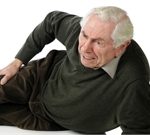
You know that you need to watch your weight to lower your risk for heart disease, but that is far from the whole story. It is possible to be overfat without being overweight, meaning that you’re storing fat within your body even though the scale says you’re at a normal weight. And that distinction is key when it comes to heart health. For decades, doctors have measured a patient’s body mass index, or BMI, as a way to determine the heart disease risk associated with obesity. (There are even online calculators that let you figure out your BMI on your own.) Basically, BMI determines the percentage of fat in your body related to your height and weight. But some evidence shows that the calculation may misclassify up to 50% of those at risk of heart disease from excess fat. That’s because fat is not all the same. Fat stored around the belly, called visceral fat, is associated with insulin resistance and other metabolic abnormalities. Evidence shows that someone with a large waistline — over 40 inches for men and 35 inches for women — is more at risk for heart disease than someone with a smaller waist, even if they have the same BMI. Who’s most at risk? There are genetic components that indicate that white men, black women and people from India and South… read on >
















